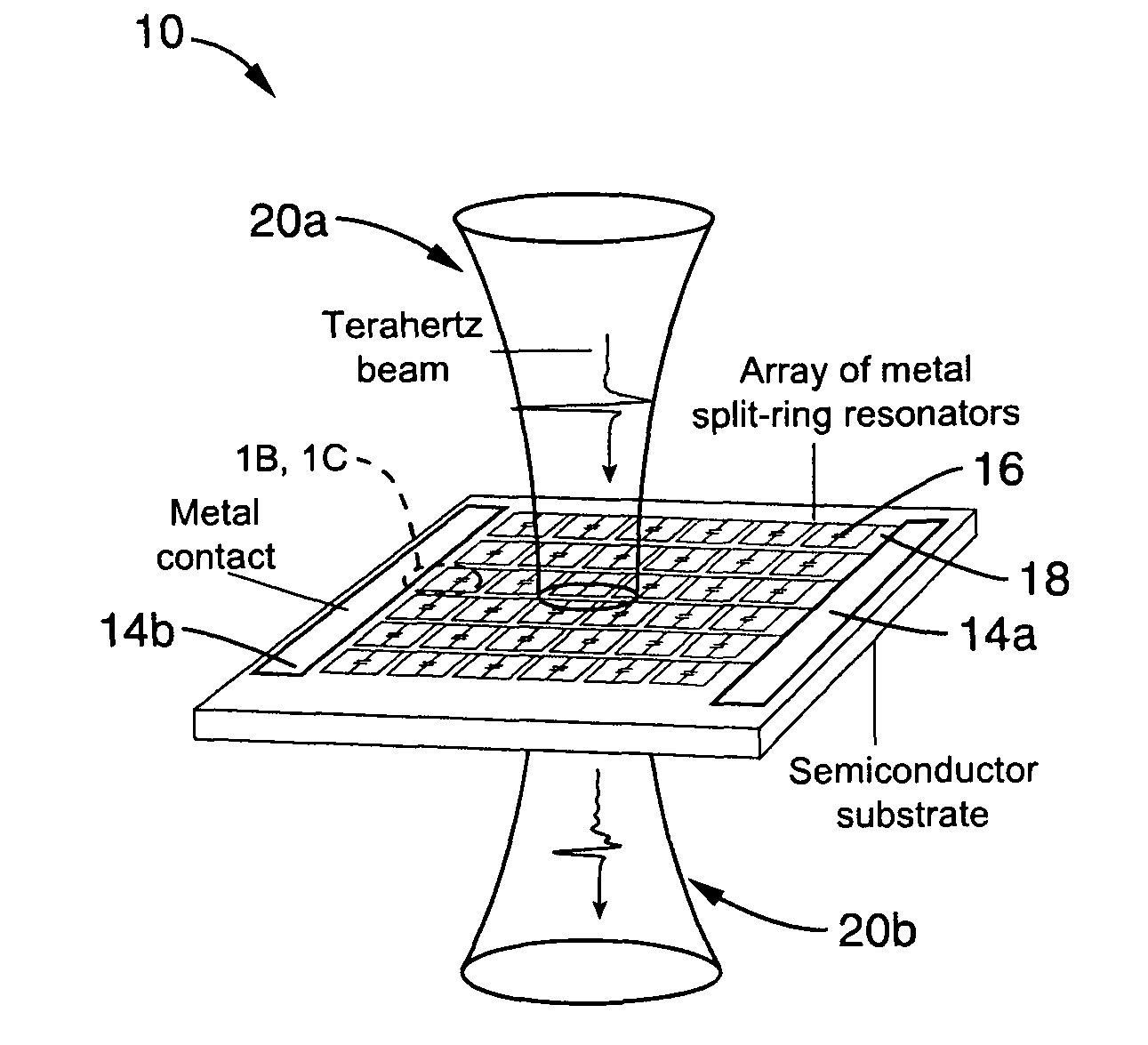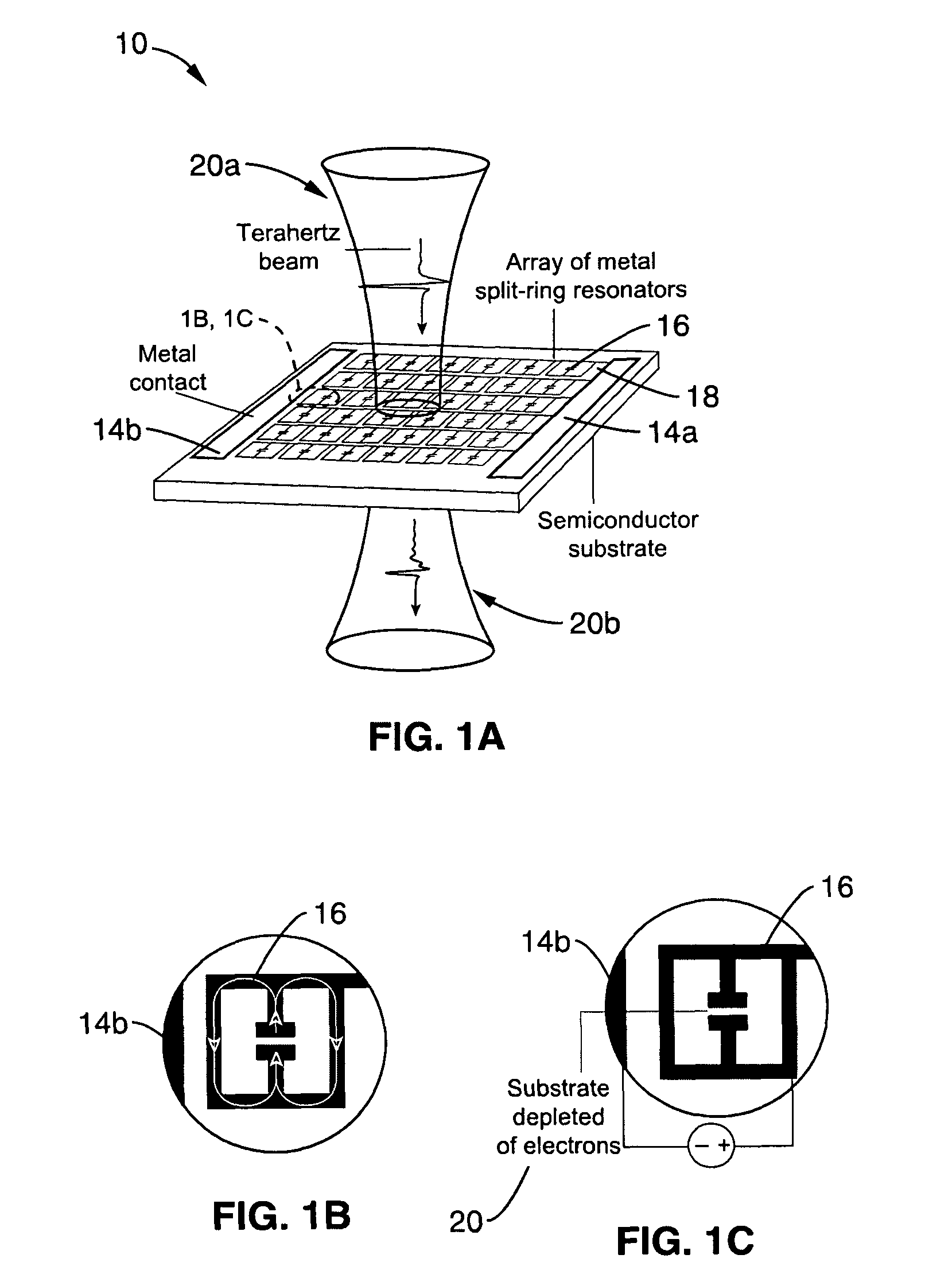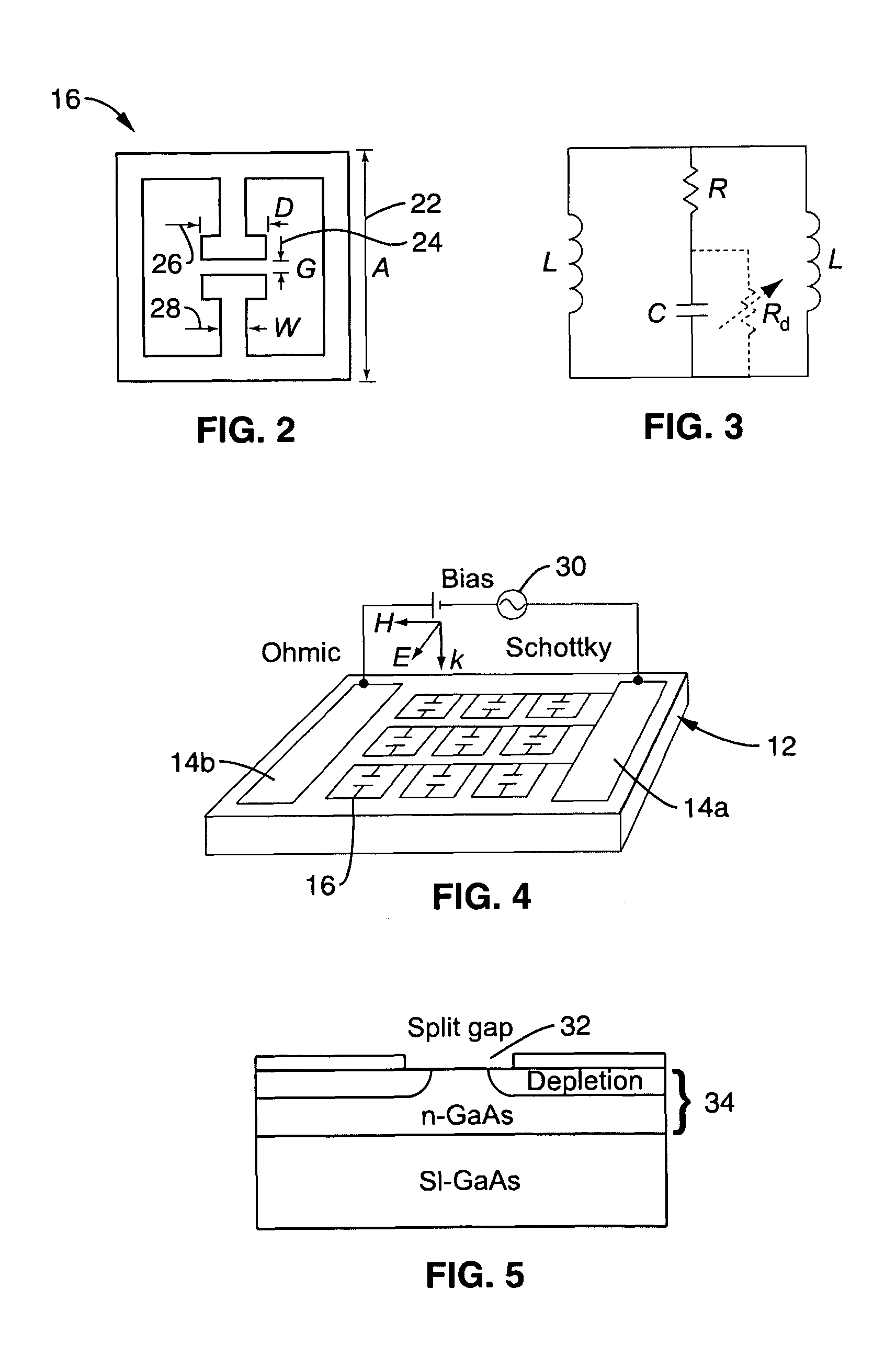Active terahertz metamaterial devices
a technology of metamaterials and active terahertz, which is applied in the direction of resonant antennas, semiconductor lasers, instruments, etc., can solve the problems of lagging behind the techniques to control and manipulate thz waves, and achieve the effects of increasing the capacitance of the gaps in the resonator, increasing the resonant response, and reducing the cost of resonant measuremen
- Summary
- Abstract
- Description
- Claims
- Application Information
AI Technical Summary
Benefits of technology
Problems solved by technology
Method used
Image
Examples
Embodiment Construction
[0075]Referring more specifically to the drawings, for illustrative purposes the present invention is embodied in the apparatus generally shown in FIG. 1 through FIG. 60 and FIG. 62 through FIG. 70. It will be appreciated that the apparatus may vary as to configuration and as to details of the parts, and that the method may vary as to the specific steps and sequence, without departing from the basic concepts as disclosed herein.
[0076]The following description is provided in a number of sections. As these sections are based on separate documents and articles, the descriptions overlap in many areas.
[0077]1. Introduction to Terahertz MM Modulators
[0078]Discussed in this introduction are the use of resonators (e.g., metal) for creating a material with tunable responses to an applied voltage. When combined with a semiconductor substrate, these materials can be used to control technologically promising terahertz radiation.
[0079]Electromagnetic radiation with frequencies lying between the ...
PUM
 Login to View More
Login to View More Abstract
Description
Claims
Application Information
 Login to View More
Login to View More - R&D
- Intellectual Property
- Life Sciences
- Materials
- Tech Scout
- Unparalleled Data Quality
- Higher Quality Content
- 60% Fewer Hallucinations
Browse by: Latest US Patents, China's latest patents, Technical Efficacy Thesaurus, Application Domain, Technology Topic, Popular Technical Reports.
© 2025 PatSnap. All rights reserved.Legal|Privacy policy|Modern Slavery Act Transparency Statement|Sitemap|About US| Contact US: help@patsnap.com



